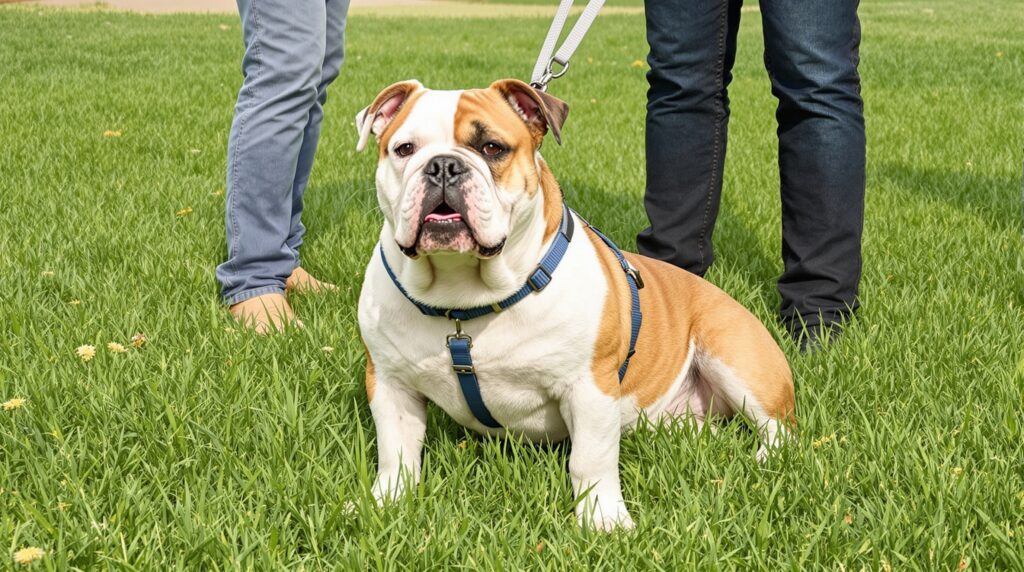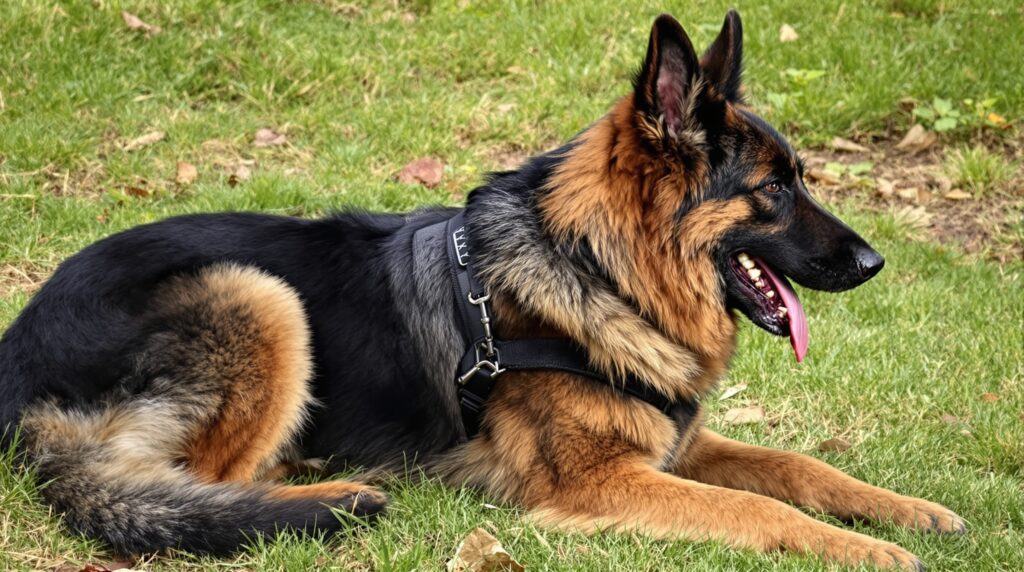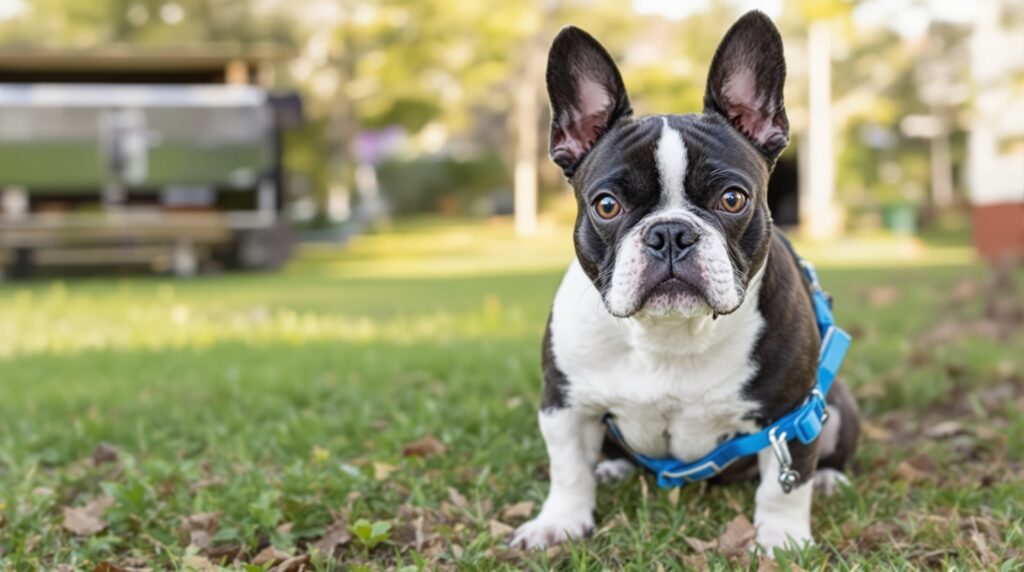Training a Bulldog can feel like a test of patience, but it doesn’t have to be overwhelming. Bulldogs are loyal and loving, yet their stubborn streak can make teaching them new habits a real challenge.
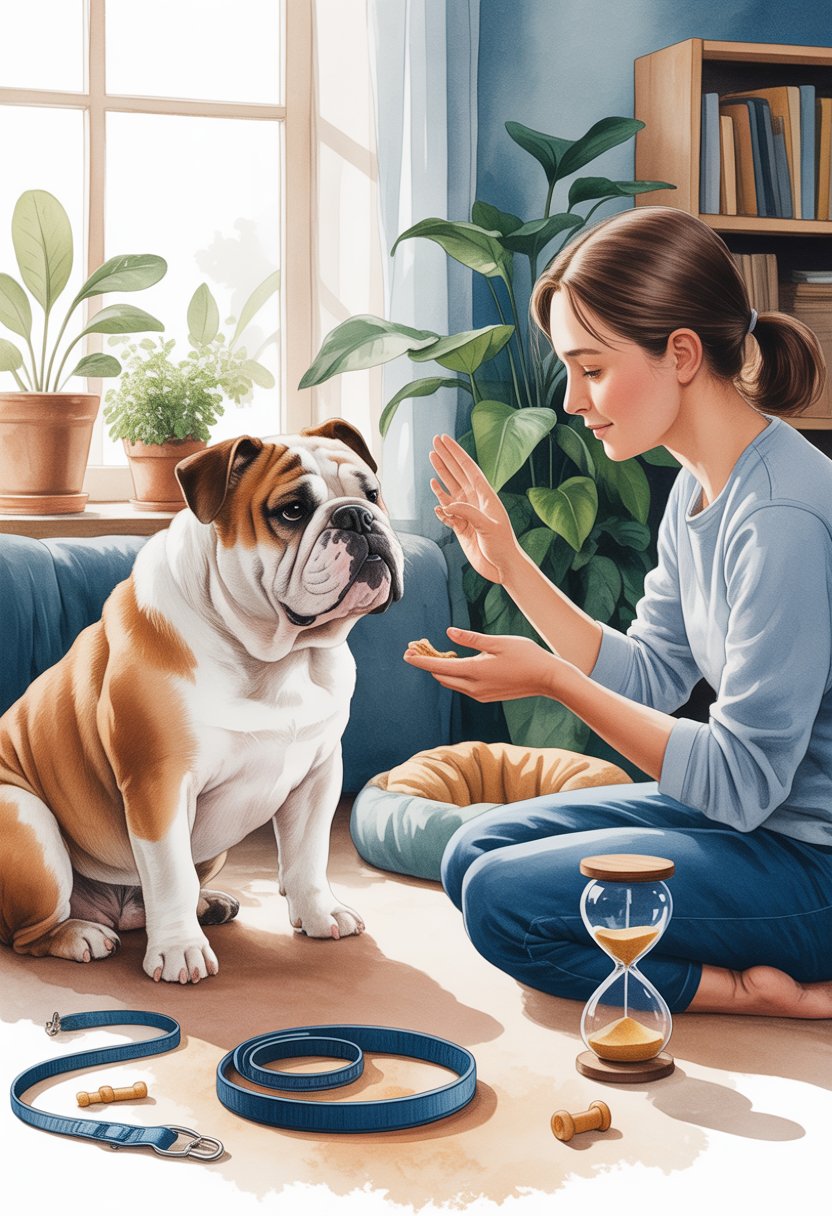
With the right approach, even small steps can spark big changes. Focusing on calm, consistent methods helps anyone create a training routine that suits a Bulldog’s personality.
Let’s look at some practical ways to build patience while guiding your Bulldog toward better behavior—and maybe even a stronger bond.
Start with short, consistent training sessions to keep your Bulldog engaged.
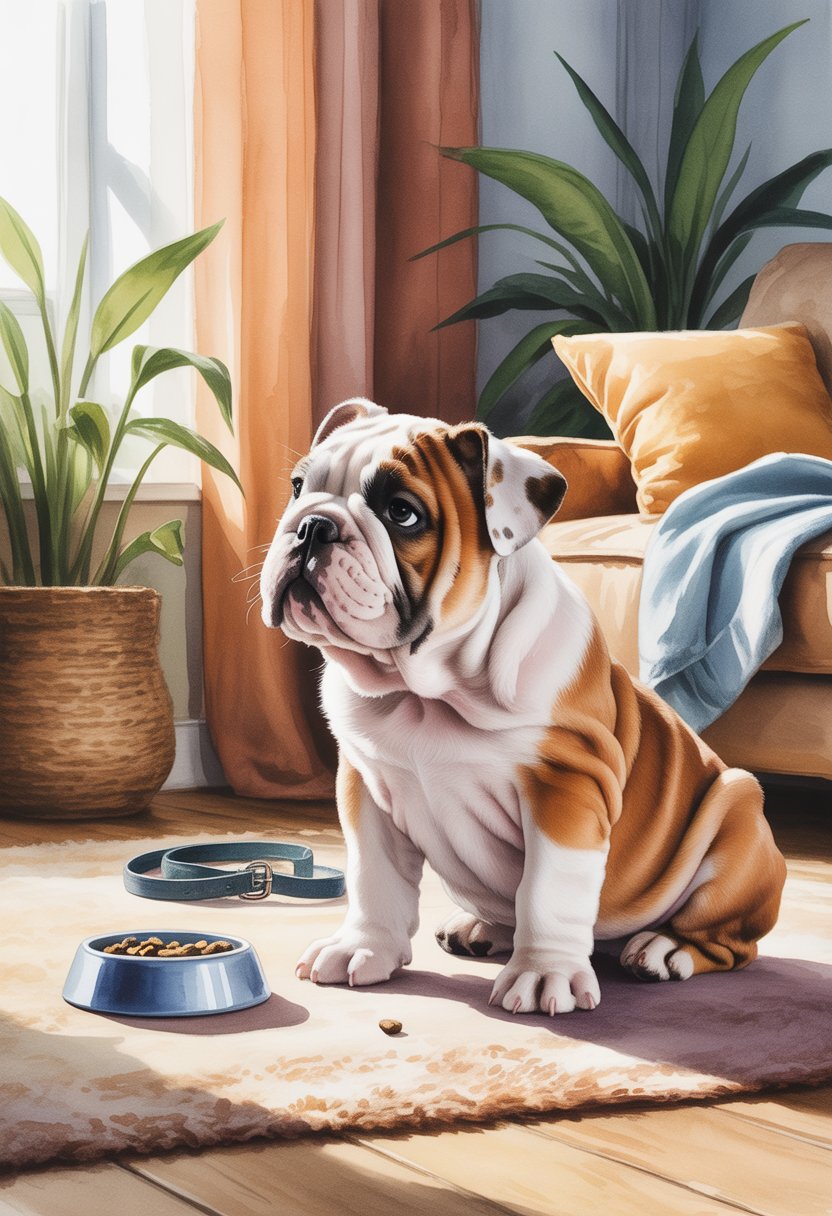
Bulldogs learn best when training feels simple and predictable. Long lessons frustrate them, but short sessions keep their attention.
Just a few minutes at a time is plenty to practice commands. Consistency matters just as much as the length of each session.
Daily practice helps Bulldogs connect actions with rewards and figure out what you want from them. If you skip too many days, they start to forget.
Making sessions fun keeps Bulldogs interested. Toss in small rewards, gentle praise, or a favorite toy to turn training into a positive routine.
That trust you build keeps them motivated to try again. Short, frequent lessons set your Bulldog up for steady progress.
Use positive reinforcement like treats and praise to encourage good behavior.
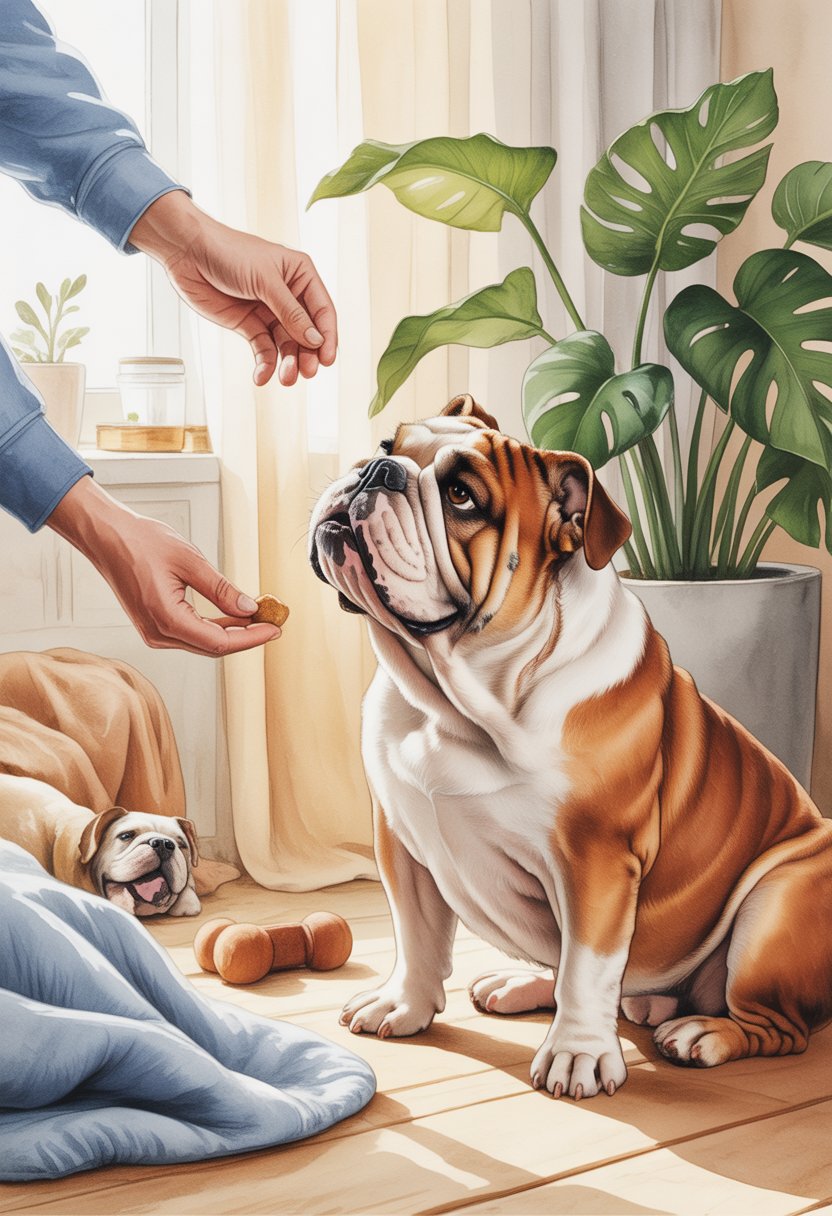
Bulldogs really notice when you reward their efforts. Giving a treat or kind word right after they follow a command helps them get what you’re asking for.
This clear link between behavior and reward makes training smoother. Praise can work just as well as food.
A cheerful voice, gentle petting, or extra attention shows your dog that good behavior pays off. This also strengthens your bond.
If your Bulldog sits when you ask, let them know every time. It could be a treat, a pat, or just a happy word.
Mixing things up keeps training interesting. Sometimes it’s a snack, sometimes it’s just praise.
This way, Bulldogs start to value your attention as much as treats. Focusing on rewards instead of corrections helps them stay motivated and keeps frustration low.
Remain calm and patient, even when your Bulldog resists commands.
Bulldogs sometimes push back by ignoring or resisting commands. That doesn’t mean they can’t learn—it usually just means they need more time.
If your Bulldog resists, staying calm keeps things positive. Raising your voice or getting frustrated just makes them tune out.
A steady, gentle tone works better. Short training sessions hold their attention and keep stress low for both of you.
Repeating small steps patiently helps them connect the command with the reward. Using the same words and signals each time avoids confusion.
Patience builds trust. When your Bulldog feels safe and unpressured, they’re more willing to cooperate.
Break training into small, manageable steps to avoid overwhelming your dog
Bulldogs get frustrated if you throw too much at them at once. Breaking training into small steps helps them stay focused and relaxed.
Instead of teaching a whole command in one go, start with the first part. If you’re teaching “sit,” maybe just reward them for lowering their back legs at first.
Add the rest of the movement later. Short, clear steps build confidence.
Each small win gives your dog a reason to stay engaged. Training feels less like a struggle that way.
Keeping sessions brief and focused on one step at a time helps Bulldogs learn without stress. Those small victories add up to real progress.
Incorporate playtime as a reward to build motivation and trust

Bulldogs perk up when training feels fun. Using playtime as a reward helps them link good behavior with something they actually enjoy.
Short play sessions after a successful wait or calm behavior reinforce progress. Tossing a favorite toy after they sit quietly teaches them that waiting leads to something good.
Play builds trust too. When your Bulldog sees that patience earns attention and fun, it strengthens your bond.
Keeping playtime balanced matters. Too much excitement makes it tough for them to settle down again.
Short, calm breaks work best to keep training on track. Linking patience with play helps bulldogs learn that waiting pays off.
Avoid punishment; instead, redirect stubborn behavior gently and consistently.
Bulldogs can be strong-willed, and punishing them usually backfires. Harsh corrections just add stress and confusion.
A calm, steady approach works better. When your Bulldog does something you don’t want, guide them to a better choice.
If they chew on furniture, offer a chew toy as an alternative. This keeps things positive and avoids conflict.
Redirect in the same way each time. Consistency helps your Bulldog understand what you expect.
Gentle redirection builds trust. Your dog starts to see training as safe and predictable.
Follow up with praise or a treat after redirection. Bulldogs start to connect good behavior with good things.
Redirection becomes part of your daily routine. It helps break stubborn habits while keeping things calm.
Set a regular daily routine to create a sense of security and predictability
A bulldog feels more at ease when the day follows a clear pattern. Feeding, walking, and training at the same times each day helps them know what to expect.
This reduces confusion and makes learning less stressful. Routines give Bulldogs a sense of safety.
When they know when meals, play, and rest happen, they can relax and focus better during training. Predictability lowers anxiety and builds trust.
Simple habits like morning walks or evening playtime create structure. Bulldogs adjust faster when the same steps repeat each day.
Keeping daily activities steady helps Bulldogs learn patience. They don’t have to guess what’s next, and that calm mindset supports better behavior.
Celebrate small victories to maintain your enthusiasm and your Bulldog’s confidence

Training a Bulldog takes time, and progress can be slow. Noticing and celebrating small steps keeps both you and your dog motivated.
Even a simple sit or a calm response deserves a little recognition. When Bulldogs get rewarded for small wins, they build confidence.
They learn that effort leads to positive outcomes, which encourages them to keep trying.
Owners need that encouragement, too. Acknowledging small achievements helps you stay patient and focused on growth.
Celebrations don’t have to be a big deal. A cheerful tone, gentle praise, a favorite treat, or a quick play session shows your dog they did well.
Marking small milestones creates a positive routine. Bulldogs start to enjoy training and look forward to learning.
Understanding Bulldog Temperament
Bulldogs have a unique personality shaped by their history and breeding. They’re loyal and affectionate, but their stubborn side makes training both rewarding and, well, sometimes a headache.
Common Behavioral Traits
Bulldogs usually have a calm, steady nature. They love spending time with their families and thrive on human attention.
Despite their solid build, many Bulldogs are total lap dogs. But they can be stubborn and independent.
Sometimes they ignore commands if they don’t see a reason to follow. Unlike some breeds that live to please, Bulldogs want clear motivation.
They’ve got a protective side too. Bulldogs may watch strangers closely, but they’re rarely aggressive if you socialize them properly.
Early exposure to new people, pets, and places helps them stay confident and well-adjusted. Some Bulldogs just don’t have much get-up-and-go.
They love to rest and might resist long exercise sessions. Short, consistent play or walks usually work better for them than anything too demanding.
Why Bulldogs Require Patience
Training a bulldog takes extra time because of their natural stubbornness. They like to test boundaries, so you’ll probably need to repeat lessons before they really listen.
It helps to stay calm and avoid getting frustrated. Harsh methods just make bulldogs dig in their heels and resist even more.
Bulldogs do best with positive reinforcement—think treats, praise, or a quick game. When training actually feels good, they’re way more likely to cooperate.
Consistency is a big deal here. Mixed signals just confuse them and slow everything down.
You’ll notice bulldogs move at their own pace. They might take longer to pick up commands than, say, a border collie.
That doesn’t mean they can’t learn! It just means you’ll want to keep training sessions short, frequent, and kind of predictable.
Creating a Positive Training Environment
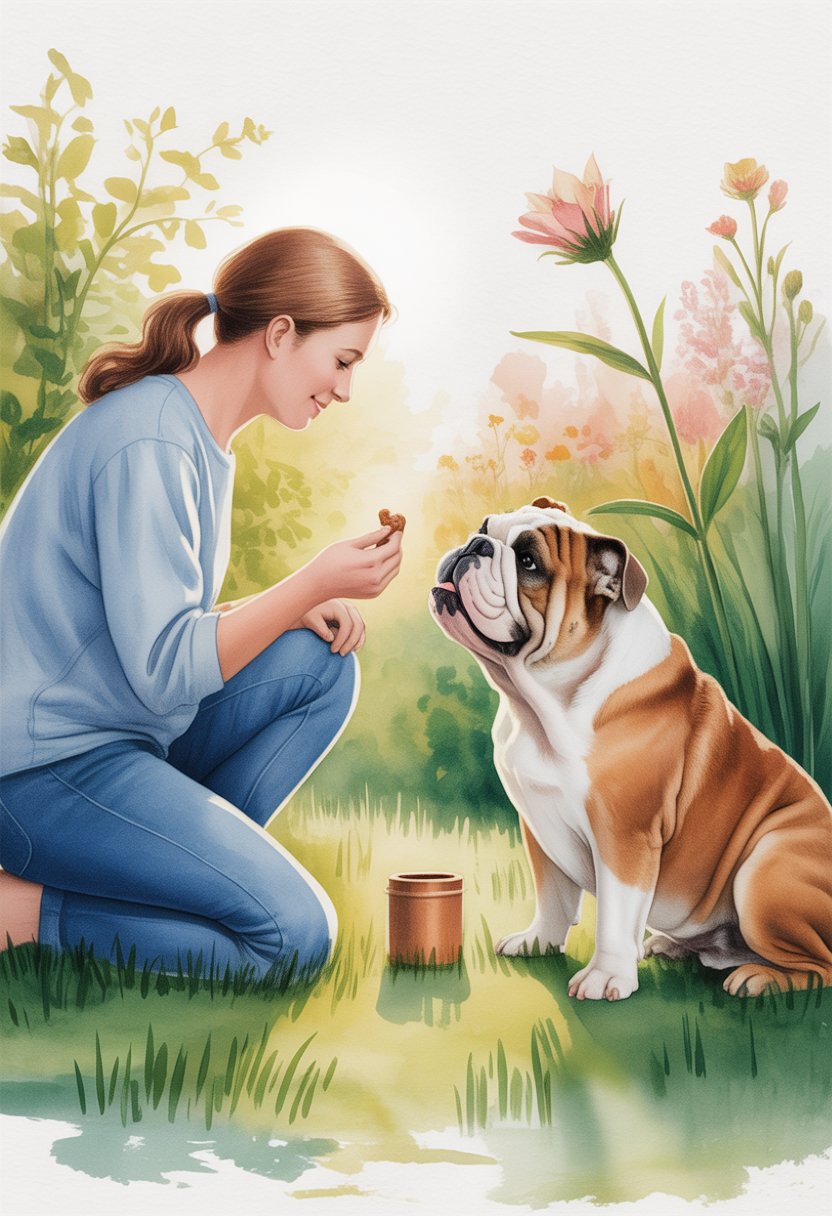
A bulldog learns best when training feels safe, predictable, and maybe even a little fun. Clear routines and regular rewards take the edge off and help the dog focus.
Establishing Consistent Routines
Bulldogs like knowing what’s coming next. Feeding, walking, and training at the same times each day helps them feel secure.
A set schedule keeps things clear and can even prevent some annoying behaviors.
Short training sessions work better than dragging things out. Ten or fifteen minutes usually does the trick before their attention wanders.
Doing sessions at the same time every day helps your bulldog get into a groove.
Use the same words and hand signals each time. For example, always saying “sit” instead of mixing it up with “sit down” keeps things simple.
Sticking with the same language and timing makes it easier for your bulldog to connect what you want with what they’re supposed to do.
A calm spot helps, too. Training in a quiet space without distractions lets your dog actually focus.
Once they’ve got the basics, you can add a few distractions to help them gain confidence and patience.
The Role of Positive Reinforcement
Bulldogs have a tough time with harsh methods, but they light up when training feels rewarding. Positive reinforcement just means marking good behavior with something the dog actually cares about—like treats, praise, or playtime.
Give rewards right after the behavior. If your bulldog sits when you ask, hand over the treat within seconds. That way, the connection sticks.
Switch up the rewards now and then. Some bulldogs go nuts for snacks, while others are all about toys or just a little affection. Changing things up keeps them from zoning out.
Here’s a quick table to keep track:
| Behavior | Reward Type | Dog’s Response |
|---|---|---|
| Sit | Small treat | Quick response |
| Stay | Praise | Moderate focus |
| Come | Toy play | High energy |
Rewards, when used right, help bulldogs trust you more. They start repeating good behavior because they want to—not because they’re scared.

